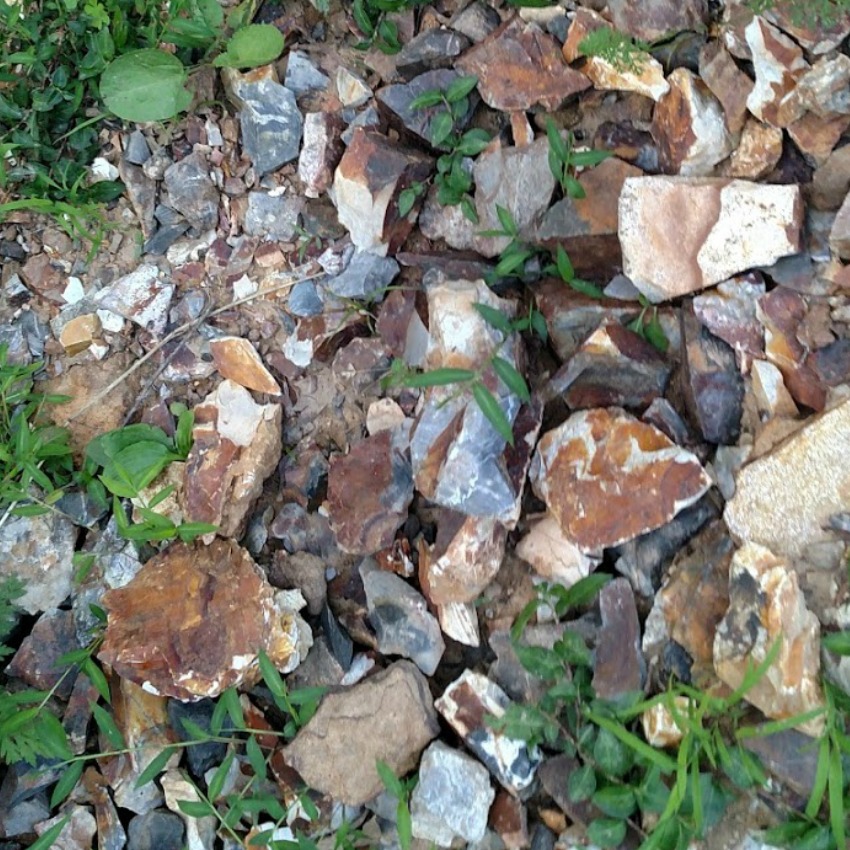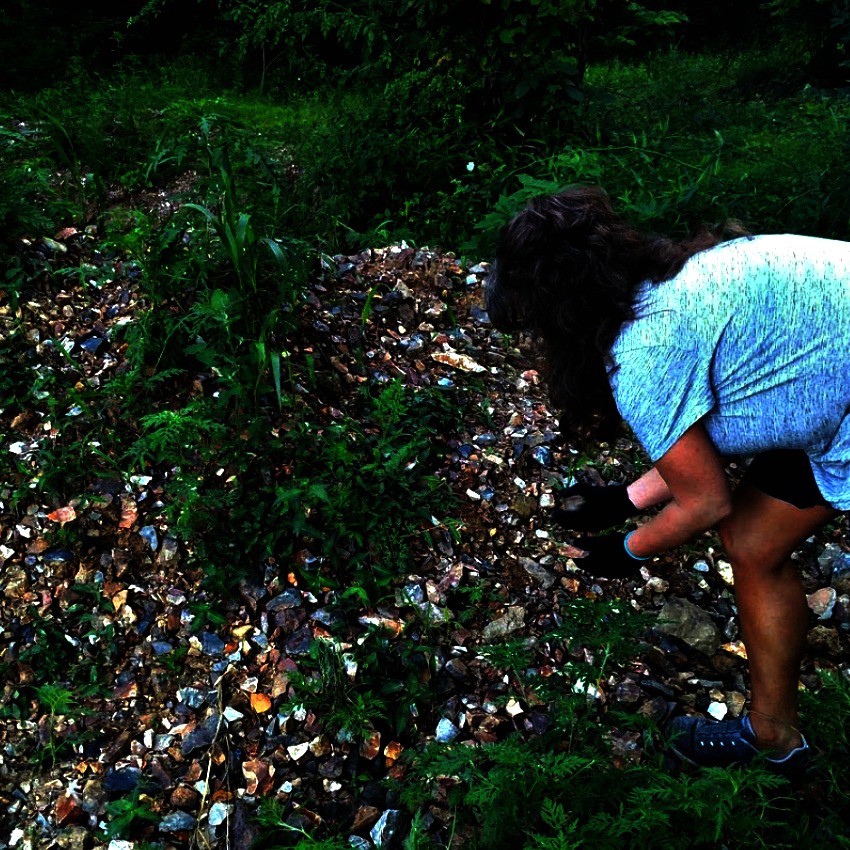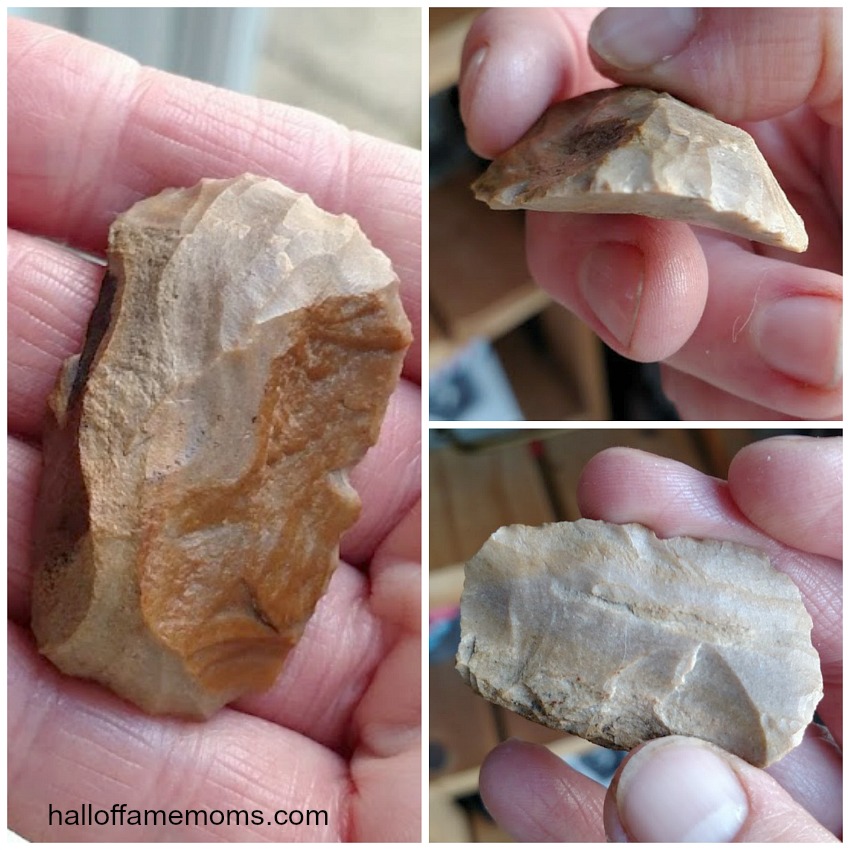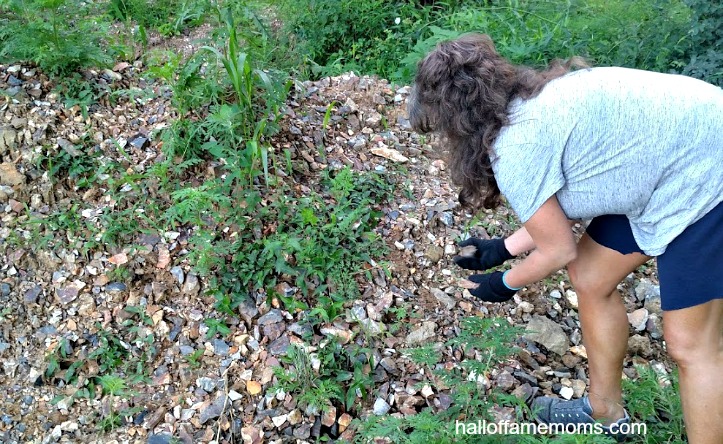Somehow, I suppose through my love of history and ancient Indian artifacts, I came across Nethers Farm on Flint Ridge in Hopewell, Ohio and decided I wanted to get some flint.
My affiliate links are included below. I may earn a few cents if purchases are made through the links. See my Disclosure policy here.
I wouldn’t have any reason to care about Flint Ridge flint if I weren’t into cool rocks and ancient Indian artifacts and maybe history, come to think of it. I’m not a knapper (someone who knaps their own flint tools) and I’m not into collecting modern made reproductions.
I’ve read that Flint Ridge flint is not only Ohio’s “famous flint” but was very important in Native American life going back for possibly thousands of years.
Flint is also Ohio’s state rock, but not all flint in Ohio comes from Flint Ridge.
After taking the kids to Hocking Hills State Park we made a stop at Nethers Farm on the way home.

I turned down the highlight feature when editing this image below to show you the beautiful colors of flint that are represented at Flint Ridge at Nethers Farm. Knapping if the process of working off the surface to shape your tool and the beauty of the stone shines through. Wow!

According to Ohio History Central’s website:
Referred to as the “Great Indian Quarry of Ohio,” Flint Ridge is a nearly eight mile long vein of high quality Pennsylvanian-age Vanport flint located in Licking and Muskingum Counties of eastern Ohio. Hundreds of quarry pits and workshop sites are scattered across more than 2,000 acres of ridge top in these Appalachian foothills. The prehistoric flint mines range in size from 12 to 80 feet in diameter and from 3 to 20 feet in depth. …
All of Ohio’s pre-contact American Indian peoples used Flint Ridge flint to make spear and arrow points, scrapers, and knives. The Hopewell culture (100 BC – AD 500) especially prized it, using it to make particular kinds of small knives called bladelets. ” Read more here.
Finding my First Indian Artifact
Sometime around June I was digging in my yard and found an archaic Indian scraper, as I soon found out. I was SO excited, this was AMAZING to me. You have no idea.
Anyways, I’ve been wanting to hunt for relics but you can’t do this without permission from land owners and permits for government-run parks or land. There are no public places that I know of that a person can hunt and collect on land here in Ohio. While I have permission from relatives of family members to hunt on their property they are out of town and I just can’t go on a whim.

Anyways, I showed people in the Native American artifact groups I’m in and the overall response was that I had a scraper or some tool. I took my scraper to the archaeology lab at our Stark Kent State University branch and was told my scraper appeared to be from the late archaic era and he recognized the flint as being from Plum Run in the Alliance, Ohio area.
In addition to my exciting personal find, a Youtube I follow sent me some of his many eastern North Carolina artifacts (he finds so many!) to use in my homeschool club this year. Thanks again Indian Trace. You can see what he sent me by watching this Youtube video.
So what do you think? Are you a history lover? Do you hunt for artifacts or something else? Tell me in the comments.
More resources on Flint Ridge:
For the Ohio History Connection Flint Ridge Museum and more visit this website.
Here’s the Nethers Farm Facebook page. You can just go quarry or pick up flint. As of this summer (2019) the price is $7.50 per person and 5o cents per pound. Mrs. Nethers has a scale on the porch so you can weigh and pay if she’s not there to collect. And, I recommend you don’t drive into the quarry area because one or more people I’ve listened to have popped a tire. Flint can become VERY sharp.













I would not recommend taking young children there because the flint can be VERY sharp. It has cut people and made them bleed and popped a tire or more. You’ll need to dress for safety and definitely take goggles if you’re going to be quarrying it. I don’t want to imagine a piece of flint to the eye 🙁 . There are some video/posts online from other people visiting there you should look up so you’re prepared. Thanks for taking time to comment! 🙂
After the weather warms up & this COVID-19 is under control, I’d like to take my 4 & 6 year old granddaughters to a flint quarry where they allow you to dig. I’ll find out ahead of time if we need to bring our own science goggles. I’m in Maryland & had a fantastic week taking a fossils class. I think they’ll have loads of fun just digging!